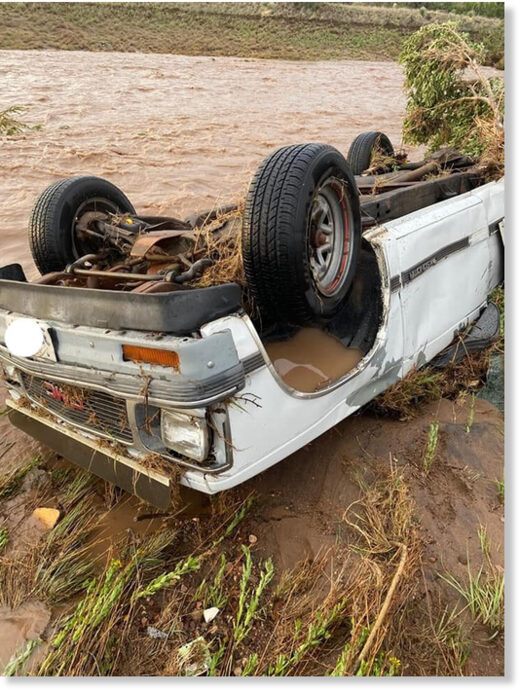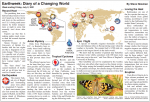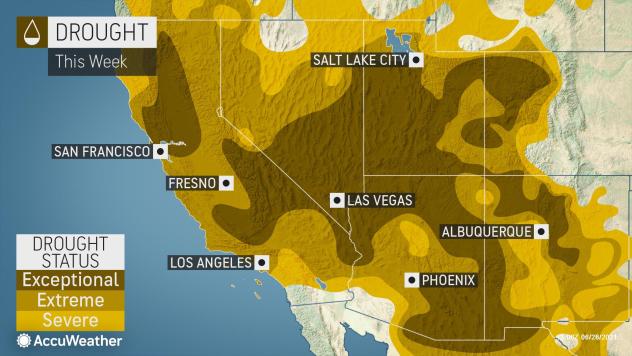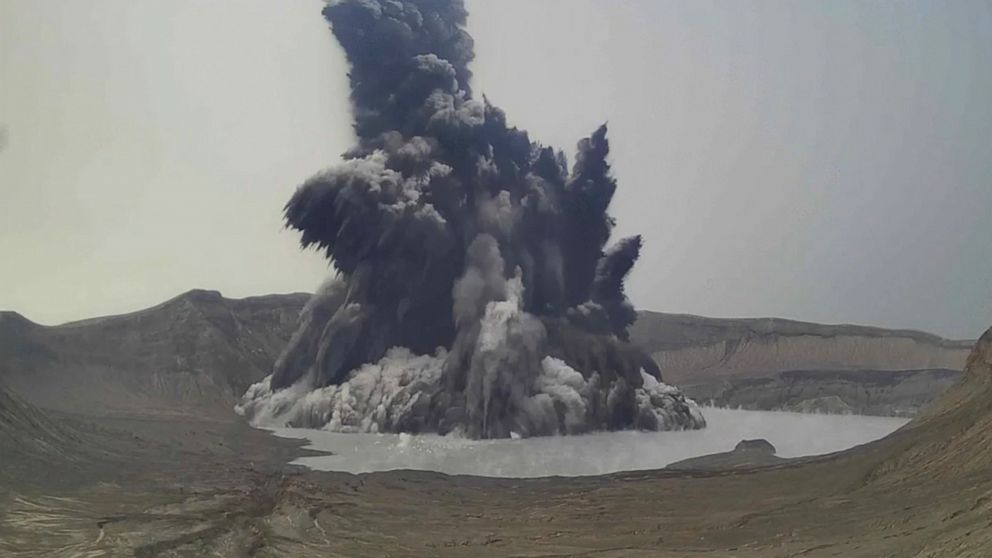Another Bogus Climate Report blames Global 'Cooling' on Global 'Warming' - Electroverse
Articles Extreme Weather GSM Volcanic & Seismic Activity
ANOTHER BOGUS CLIMATE REPORT BLAMES GLOBAL ‘COOLING’ ON GLOBAL ‘WARMING’
JUNE 26, 2021 CAP ALLON
Despite a ban on ozone depleting gases –such as CFC and HCFC refrigerants, and recent reports that the ozone hole is diminishing– a new study from an international team of scientists claims that global warming is leading to greater ozone losses.
The research argues that extremely low winter temperatures high in the atmosphere over the Arctic are becoming more frequent and more extreme because of climate patterns associated with global warming.
In a perfect example of what George Orwell called
Doublethink the AGW party is claiming that global ‘warming’ can also mean global ‘cooling’ — i.e. that
your CO2 emissions (i.e.
your existence) are responsible for ALL things climate; even the
stark cooling we’ve witnessed since 2016.
The paper goes on, stating that these extreme low temperatures are said to be causing reactions with the remaining ozone depleting chemicals and leading to greater ozone losses.

The new study by UMD, the Alfred Wegener Institute’s Helmholtz Centre for Polar and Marine Research, and the Finnish Meteorological Institute has been published in the journal
Nature Communications.
Ross Salawitch, professor in the UMD Department of Atmospheric and Oceanic Science, the Department of Chemistry and Biochemistry, and the Earth System Science Interdisciplinary Center, said: “We’re in a kind of race between the slow and steady decline in CFCs, which take 50 to 100 years to go away, and climate change, which is causing polar vortex temperature extremes to become colder at a rapid pace.
“The increasingly cold temperatures, Salawitch continues, “create conditions that promote ozone depletion by CFCs. So, even though these compounds are slowly going away, Arctic ozone depletion is on the rise as the climate changes.”
New data from the study showed the coldest Arctic polar vortex temperatures and the highest ozone losses on record in 2020, beating the previous records set nine years ago in 2011 (some sort of
solar minimum correlation is highly likely here–not that the researches dare touch the possibility that a natural phenomenon could be behind their findings).
According to these scientists, the chlorine is normally non-reactive within the Arctic polar vortex but
clouds provide the right conditions for the chlorine to change form and react with bromine and sunlight to destroy ozone.
The story is similar above
the Antarctic, too.
The European Union’s Earth observation program announced at the end of 2020 that the ozone hole over Antarctica had swelled to its largest size and deepest level in at least 15 years, to become among the most notable ever recorded.
Clare Nullis, of the
warm-mongering WMO, explains that the ozone hole begins to expand every August –at the start of the Antarctic spring– and reaches a peak around October.
“The air has been below minus 78 degrees Celsius, and this is the temperature which you need to form stratospheric clouds — and this is quite a complex process,” said Nullis at a U.N. briefing in October, 2020. “The ice in these clouds triggers a reaction which then can destroy the ozone. So, it’s because of that that we are seeing the big ozone hole this year.”
But these findings contradict the
absurd consensus that global warming is causing the global cooling, and again they go against the so-called ‘science’ behind the international accord (the Montreal Protocol) devised to phase out those ozone-depleting substances (OSDs)–such as CFC and HCFC refrigerants .
OSDs have been on the decline since their peak in 2000 (shown below), and the holes growing above the poles a full 2+ decades later shows the correlation between OSDs and ozone isn’t there. It simply doesn’t play that reduced OSDs are all of a sudden having an unprecedented impact on the ozone layer. No, the mechanism here appears to be natural, and likely associated in some way with the
historically low solar activity Earth has been receiving over the past decade+.

Past and predicted levels of controlled gases in the Antarctic atmosphere, quoted as equivalent effective stratospheric chlorine (EESC) levels, a measure of their contribution to stratospheric ozone depletion.
These findings also confirm what NASA has been saying for years — that
the upper atmosphere is cooling:
The Chill of Solar Minimum: The sun is entering one of the deepest Solar Minima of the Space Age. Sunspots have been absent for most of 2018.

electroverse.net
The formation of stratospheric ozone is initiated by ultraviolet (UV) radiation coming from the Sun.
As a result, an increase in the Sun’s radiation output increases the amount of ozone in Earth’s atmosphere.
The Sun’s radiation output and sunspot number vary over the well-documented 11-year solar cycle. Observations over several solar cycles since the 1960s show that global total ozone levels vary by 1 to 2% between the maximum and minimum of a typical cycle.
However, ‘global’ total ozone levels aren’t necessarily what we’re interested in here. Evidence suggests that ozone depletion during times of low solar activity is far greater
above the poles than elsewhere on the planet. This is a phenomenon we’re seeing today, at both the Antarctic and Arctic.
This could well be the true cause of
Polar Amplification.
Climate alarmists of course love to claim that CO2 is disproportionately warming the Arctic, but they have no agreed-upon mechanism as to how this could occur.
It is fantasy.
On the other hand, a positive correlation between decreasing solar activity and ozone depletion above the Arctic fits very well, as does the negative correlation between ozone depletion and rising surface temps.
There is another key forcing to factor into all this, and that is
volcanic eruptions.
Explosive volcanic eruptions inject sulfur gases directly into the stratosphere, causing new sulfate particles to be formed. The particles initially form in the stratosphere downwind of the volcano and then spread throughout the hemisphere or globally as air is transported by stratospheric winds.
One method of detecting the presence of volcanic particles in the stratosphere uses observations of the transmission of solar radiation through the atmosphere. When large amounts of new particles are formed in the stratosphere over an extensive region, solar transmission is measurably reduced (as are terrestrial temperatures).
The eruptions of Mt. Agung (1963), El Chichón (1982), and Mt. Pinatubo (1991) are the most recent sizable examples of sulfur injections that temporarily reduced solar transmission. Chile’s Calbuco volcanic eruption (2015) is another– this stratospheric injection played a role in enhancing the size of the ozone hole back in 2015:

Average ozone concentrations over the southern hemisphere during October 1-15, 2015, when the Antarctic ozone hole for that year was near its maximum extent. The red line shows the boundary of the ozone hole.
At its maximum size, the 2015 hole was the fourth-largest ever observed. It was in the top 15% in terms of the total amount of ozone destroyed. Only 2006, 1998, 2001 and 1999 had more ozone destruction, whereas other recent years (2013, 2014 and 2016) ranked near the middle of the observed range.
2020’s hole appears even larger that 2015’s, clear indication that factors other than ODSs are key to ozone depletion above the poles — namely, surprise-surprise, solar and volcanic activity.
Unfortunately, the U.N. and its fraudulent little offshoot –the WMO– remains chained to the Montreal Protocol.
Clare Nullis concludes that despite these expanding holes, experts still believe the ozone layer is slowly recovering after adoption of the accord in 1987, and she urges nations to stick to the measures, citing climate projections that indicate that the ozone layer will return to 1980 levels in 2060.
They must think we’re idiots; but I worry, as a collective, that we are.
“If you want a picture of the future, imagine a boot stamping on a human face—for ever.”
―
George Orwell, 1984
Enjoy your weekend!
BONUS: RECORD-BREAKING “POLAR BLAST” ON COURSE FOR NEW ZEALAND
New Zealand’s chill of winter is set to truly arrive over the next few days, as a “polar blast” invades the nation of the back of weak and wavy meridional jet stream flow.
The big freeze will arrive this weekend with conditions deteriorating further Monday through Wednesday.
Record breaking lows and snows are expected to impact
both islands.
“Snow is possible to sea level in parts of Southland, Fiordland and Otago, with heavy snow on the ranges and hilltops,” reads a recent WeatherWatch statement.
“Wind chill may be the main problem for many southern farmers, with livestock exposed to sub-zero daytime temperatures in the wind around Southland and Otago and potentially Canterbury’s high country.”
The snow won’t be restricted to the just South Island, reports
nzherald.co.nz, with Waiouru, the Desert Rd, Ohakune, Taihape and National Park also set to receive anomalous accumulations of global warming goodness.
Areas spared from the snow should still brace for potentially record-breaking low temperatures.
“Both islands are impacted by the cold, starting Monday in Southland and peaking in Northland by Wednesday morning,” continues the WeatherWatch forecast, with the mercury in the central North Island predicted to plunge to below -6C (21.2F) Tuesday night — an astonishing feat, particularly given that winter is just getting started.
Stay tuned for updates.
The
COLD TIMES are returning, the mid-latitudes are
REFREEZING, in line with
the great conjunction,
historically low solar activity,
cloud-nucleating Cosmic Rays, and a
meridional jet stream flow (among other forcings).
Both NOAA and NASA appear to agree,
if you read between the lines, with NOAA saying we’re entering a
‘full-blown’ Grand Solar Minimum in the late-2020s, and NASA seeing this upcoming solar cycle
(25) as “
the weakest of the past 200 years”, with the agency correlating previous solar shutdowns to prolonged periods of global cooling
here.
Furthermore, we can’t ignore the slew of new scientific papers stating the immense impact
The Beaufort Gyre could have on the Gulf Stream, and therefore the climate overall.

 Prepare accordingly
Prepare accordingly—
learn the facts, relocate if need be, and grow your own.















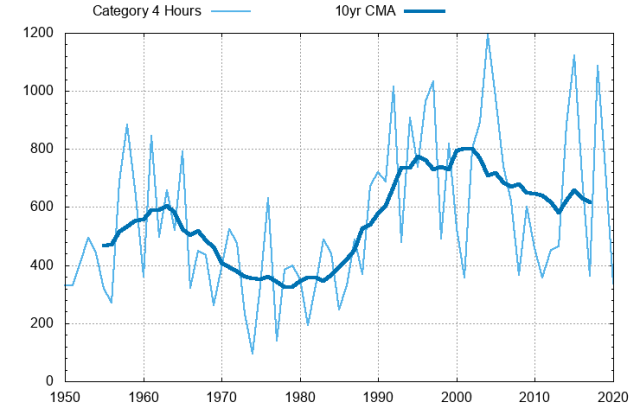



















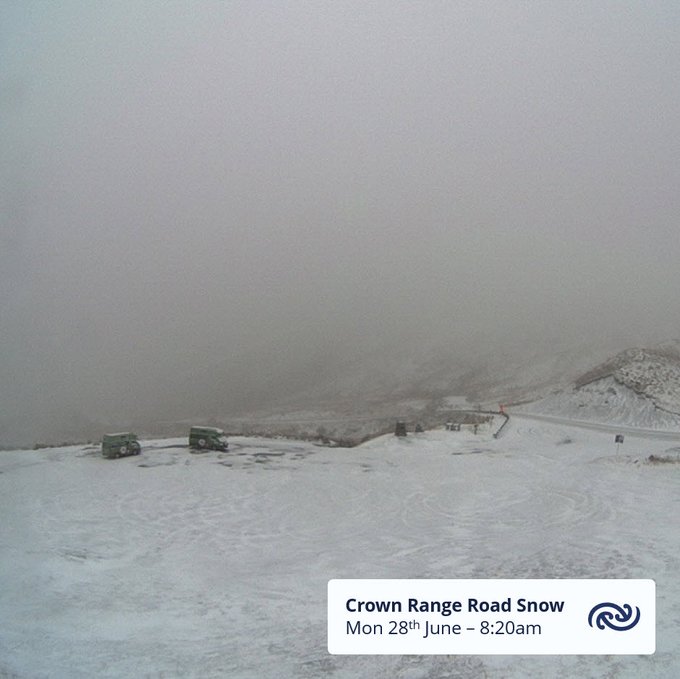
/cloudfront-ap-southeast-2.images.arcpublishing.com/nzme/W2C2CJLCWATOB7JOVAKQSYRA7U.jpg?w=640&ssl=1)































